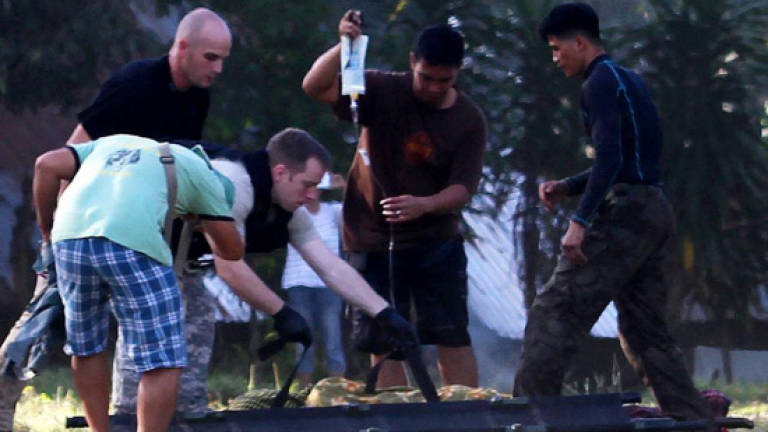US role in Philippine raid under scrutiny

MANILA: A disastrous raid on alleged Islamic militants has ignited the worst political crisis yet for Philippine President Benigno Aquino – and questions about the extent of any US role in the operation are deepening his discomfort.
Some Philippine lawmakers are asking whether the US military played a leading role in the operation in January, which ended with 44 police commandos dead in a field in the country's Muslim-majority south.
They point to reports that a US drone was overflying the area at the time, and said to be beaming back real-time images to US commanders as the fiasco unfolded.
Senate president Franklin Drilon, a powerful member of Aquino's ruling Liberal Party, is one of at least five senators to have raised questions about what the US knew.
"Did the FBI know beforehand about this operation?" Drilon asked the head of the police commando unit Getulio Napenas, who lost his job over the affair, in one hearing.
"Or any US armed forces personnel, did they know about this operation beforehand?"
Under the terms of an anti-terrorism training deployment, the US is not permitted to engage in combat in the Philippines.
A US government official said that its troops helped evacuate casualties, but that the operation was "planned and executed by Philippine authorities", and declined to comment further.
Philippine Foreign Affairs Secretary Albert del Rosario, meanwhile, declined to give a direct answer when asked about any US role, speaking only in generalities about American help to Manila in suppressing militancy.
"With the US, we have very close counter-terrorism cooperation," del Rosario, who has repeatedly said elsewhere that the operation was led by the Philippines, told AFP via text message.
The pre-dawn raid by police commandos on a secluded farming village controlled by Muslim rebels in the south was meant to be a surprise attack to capture or kill two men on the US government's global list of "most wanted terrorists".
Even though one of the alleged militants was reported killed, hundreds of rebels quickly outnumbered the police, trapping a big group in a cornfield and slaughtering the 44 commandos during a day-long battle.
The botched operation has seriously damaged Aquino, and also forced his national police chief to resign.
But many politicians, traditional media and netizens are broadening the net to encompass possible US involvement as they probe the affair.
Both houses of parliament have launched inquiries into the raid, and those investigations have unsuccessfully sought to get specifics on US involvement.
In the hearings, broadcast live on television, authorities have declined to give a full explanation on the extent of any US role, citing security issues.
In one instance, Napenas began detailing some of the US involvement, stating that American "counterparts" provided intelligence, training and maps.
But before he could elaborate, Justice Secretary Leila de Lima, who was at the hearing, quickly intervened to silence him.
"May I interject? May I just remind the officer that he is already dwelling on matters of diplomatic relations and military intelligence," she said.
In another hearing, Napenas confirmed a US helicopter was brought in to evacuate the casualties, although authorities have refused to disclose where it came from.
Philippine and US authorities have also said the severed finger from a corpse believed to be from the killed militant, Malaysian national Zulkifli bin Hir, was given to the FBI.
The FBI said it did a DNA test on the finger, which showed it was likely from Zulkifli.
US military involvement in the Philippines is not unusual, as the two nations are longtime allies.
Until last month, the United States had a unit of about 500-600 special forces in the southern Philippines that trained local troops to fight Islamic militants but was itself not allowed to be engaged in combat. – AFP